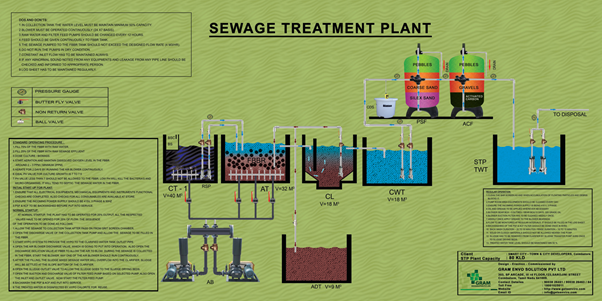MBBR
GRAM has dedicated team of consultants and engineers who have several years of industrial exposure. Technical team of GRAM has solid experience in big projects all over India.

Aerobic sludge process
The MBBR system consists of an activated sludge aeration system where the sludge is collected on recycled plastic carriers. These carriers have an internal large surface for optimal contact water, air and bacteria. The bacteria/activated sludge grow on the internal surface of the carriers. The MBBR system is considered a biofilm process. Other conventional biofilm processes for wastewater treatment are called trickling filter, rotating biological contactor (RBC) and biological aerated filter (BAF). Biofilm processes in general require less space than activated sludge systems because the biomass is more concentrated, and the efficiency of the system is less dependent on the final sludge separation. A disadvantage with other biofilm processes is that they experience bioclogging and build- up of headloss.

Advantages
- MBBR systems don’t need a recycling of the sludge, which is the case with activated sludge systems.
- The MBBR system is often installed as a retrofit of existing activated sludge tanks to increase the capacity of the existing system. The degree of filling of carriers can be adapted to the specific situation and the desired capacity. Thus an existing treatment plant can increase its capacity without increasing the footprint by constructing new tanks.
- When constructing the filling degree can be set to, for example, 40% in the beginning, and later be increased to 70% by filling more carriers. Examples of situations can be population increase in a city for a municipal wastewater treatment plant or increased wastewater production from an industrial factory.
